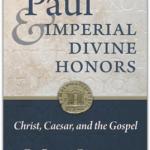At a number of points in his book, Dollimore explores the “eroticization” of death, the tendency of Western writers (and visual artists) not only to describe death as a desirable erasure of desire (or desirable for some other reason) but also to describe death in quasi-erotic terms. This is seen in the “beautiful deaths” found in ancient epic (most especially in Virgil, who has a fascination with the pathetic deaths of beautiful young men), the funeral customs of the Victorian age and after, the deaths of innocent Dickensian children, Poe’s claim that there is nothing more poetic than the death of a beautiful young woman, the fixed and eternal beauty of tragic heroines like Juliet, and on and on. Of course, there is also the recurring thread of realism ?Ethat death is just death, and it means corpses rotting and returning to dust (cf Achilles in the underworld in the Odyssey ). But the attempt to dress up death, to make it beautiful and desirable, is one of the recurring lies of Western civilization. It is one of the great contributions of late modernity (post-WW 1) to destroy this lie. To the extent that postmodernism is a theoretization of death in THIS sense, it makes a resounding contribution to Christian apologetics, for it shows death to be utterly deathful, and shows that life outside of Christ is nothing but death.














